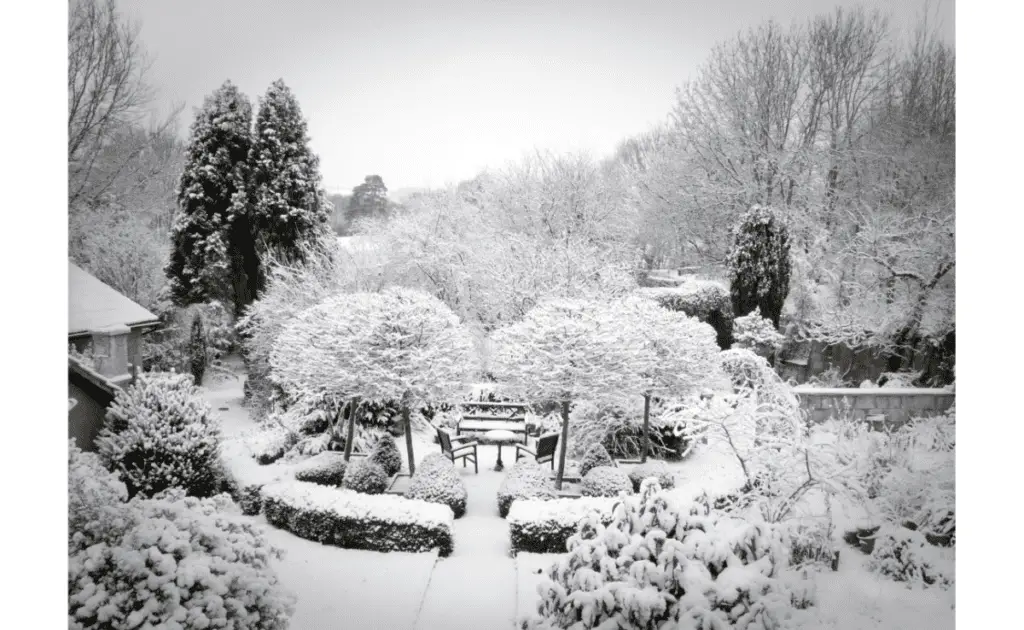
Preparing your garden for winter is usually a big task. It can be very hard to prepare your garden for cold weather, especially if you live in an area that experiences freezing temperatures.
To prepare you garden for winter there are six main things to do remove dead plants from garden beds, mulch around any sensitive plants, prune back plants the require it, water your plants in to avoid root damage and cover frost sensitive plants and final clean the area around the plants.
Step 1: Remove dead plants and debris: Remove all dead plants and debris from your garden. This includes leaves, branches, and other organic matter. Leaving these items in your garden will only make it harder for you to clear away the snow later, and it will also create a place for pests to overwinter.
Step 2: Mulch your garden beds: Mulching your garden beds is a great way to protect your plants from the cold weather. Mulch acts as an insulator, helping to keep the soil warm and preventing it from freezing. You can purchase mulch at most garden stores, or you can use materials like leaves, straw, or bark chips.
Step 3: Prune your plants: Pruning your plants is another important way to prepare them for winter. Pruning will help to protect your plants from the cold weather and from pests and diseases. It will also help to keep them healthy and strong throughout the winter. Also remember to prune any dead branches on your fruit trees and other tall plants, like sunflowers. Don’t forget to prune your raspberries.
Step 4: Water your plants: It’s important to water your plants during the winter. If you wait too long to give them their first watering, the soil may dry up completely and your plants may not survive the winter.
Step 5: Cover your plants with a frost blanket: If you’re expecting a hard frost, you can protect your plants by covering them with a frost blanket. Frost blankets are available at most garden stores, and they’re an easy way to keep your plants protected.
Step 6: Clean up: Once you’re finished pruning, you’ll need to clean up the garden debris that’s left over. You can either leave these items out in your yard or you can take them to the dump.
By following these steps, you can prepare your garden for winter and help to ensure that your plants survive the cold season. If you live in an area that experiences freezing temperatures, it’s especially important to take these steps to protect your plants.
Winterizing Raised Garden Beds
Ensure your plants do not freeze such as tender annuals and vegetables. Freezing temperatures (32 degrees Fahrenheit or lower) can kill them instantly.
Winterizing any plants:
– Fertilize plants after the first frost that comes early in the fall to help them go through winter strong and healthy. Treat any fungal diseases before winter sets in.
– Water your plants if there is a lack of rainfall. You don’t want the soil to freeze and crack when the temperatures outside plunge.
– Cover plants with a frost blanket or wrap them in burlap if you live in an area with below-freezing temperatures for an extended period of time.
– Prune any dead branches from trees and shrubs. Branches that are touching the ground can create a pathway for pests to enter your garden, as well as harboring mold and fungus which could kill your plant come springtime.
– If you live in an area with excessive snow fall, remove it from your plants! The weight of the snow could break the branches and stunt growth.
– Maintain proper mulch around perennial flowers and shrubs to protect them from winter’s ravages.
– If you live in an area with heavy snowfall, remove snow from garden paths so you can safely get to your plants without having to trudge through piles of snow.
Want to learn how to make your own garden path? Check out our post here.
How To Prepare Garden Soil For Next Year
– Work compost and organic matter into the soil before winter arrives. This will help to improve the soil’s structure and fertility.
– Allow the top layer of soil to freeze before applying a heavy layer of mulch to the garden bed. This will help to protect the soil from erosion over the winter.
– Avoid working in the garden bed if the soil is wet or muddy. You don’t want to damage the soil’s structure by digging into it with tools.
– Only apply mulch over your garden soil if you’re not planning on tilling it in the spring. If you are tilling, only add mulch after tilling has been completed and the area has dried out.
– Leave garden debris in place to protect the soil over the winter months. This will also help to prevent erosion come springtime.
– If you live in an area with very cold winters (32 degrees Fahrenheit or colder), cover your garden beds with a tarp, this could save your plants from frost burn and die back. Make sure to remove the tarp before spring arrives to allow the soil to warm up.
Gardening requires a lot of hard work, but the benefits are well worth it. Gardening is a great way to get outside and enjoy nature, while also getting some exercise. It’s also a great way to save money on groceries, as you can grow your own fruits and vegetables right in your backyard. Check out this post to find out how big a garden you need to feed a family. So, if you’re looking for a new hobby that will not only help you to relax, but also provide fresh produce, then consider starting a garden this year. No need to wait till spring, implement some of these winter prep rules now so you are ready for a great spring.

